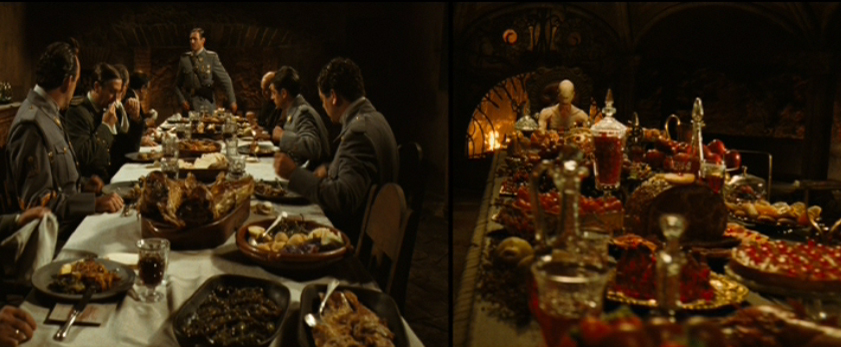Oscar Horrors continues with Michael on everyone's favorite Guillermo del Toro film
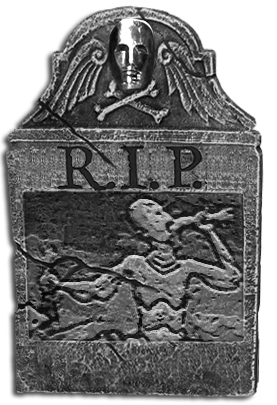
HERE LIES... Pan’s Labyrinth, winner of the 2006 Oscar for Best Art Direction.
I could go through Guillermo del Toro’s Pan’s Labyrinth a scene at a time picking out all the brilliant little details that makes its imagery so indelible, but for this post, let’s limit our focus to the film’s most famous scene: The Pale Man. The monster that has a table full of delicious food but only feeds, to use del Toro’s words, “on the blood of the innocent.” There have been thousands of scenes where one form of monster or another stalks the story’s protagonist. It is one of the basic equations of the horror genre. So what do set decorator Pilar Revuelta and art director Eugenio Cabellero do with this one that shakes the viewer on such an elemental level?
Of course it helps to start with one of the all time horrifying creatures in cinema history. Del Toro instructed the team to imagine an old obese man who quickly lost a lot of weight, and when that proved insufficiently nightmare-inducing proceeded to erase the face off their designs.
But beyond the surface there are many elements to the scene most viewers will only register subconsciously. Like...
...the way the scene mirrors an earlier scene where the tale’s other monster sat at the head of another banquet table with his back to a fireplace.
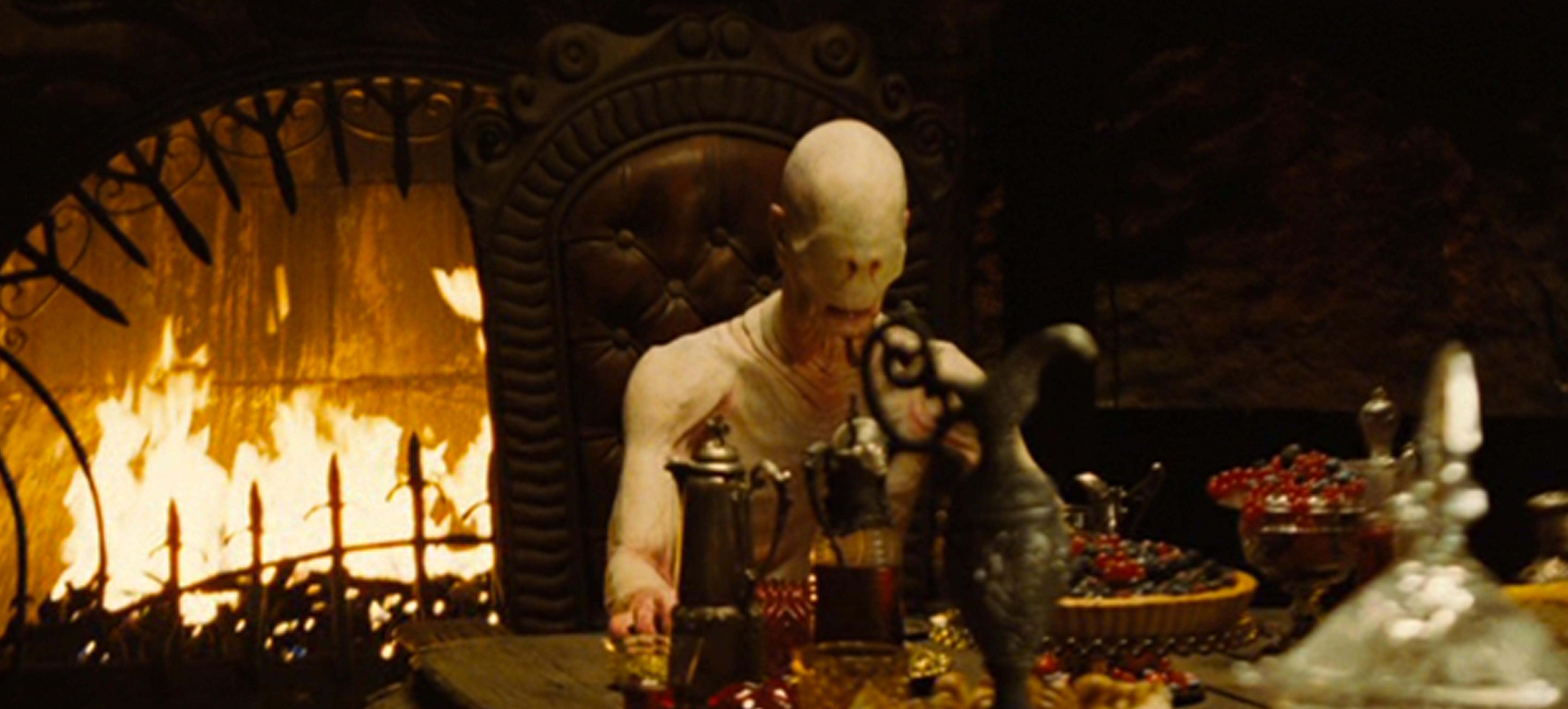
... or the way the shape Pale Man’s fireplace echoes his own disgusting mouth.
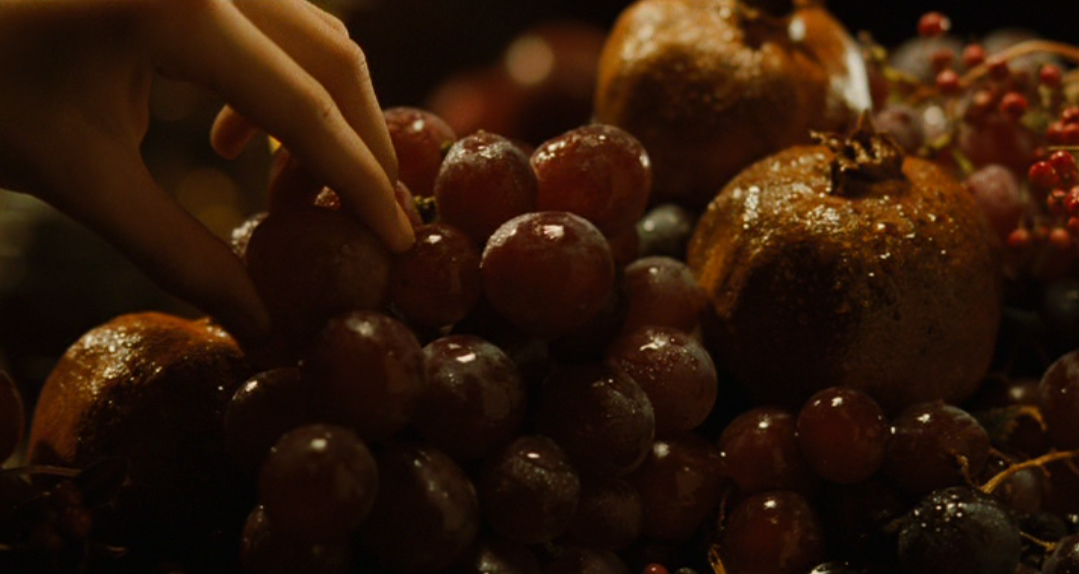
How about that the food on the Pale Man’s table is at once impossibly delicious – have you ever seen grapes so plump and glistening? – while at the same time unsettling in the way its predominantly red and purple color scheme suggests a feast of blood.
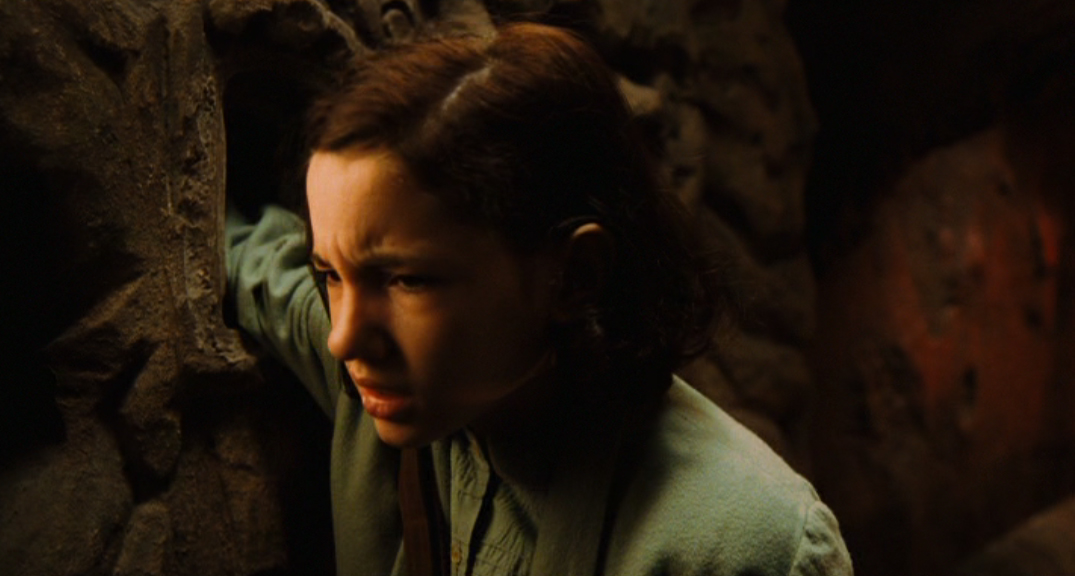
And speaking of the basic equations of horror, how about reaching into a deep dark hole unsure of what resides inside? The production team made sure poor Ophelia was into the shadows up to her shoulder: Note also the way the production team took the care to make the tiny door Ophelia defies the fairies to open more ominous and shabby than the others.
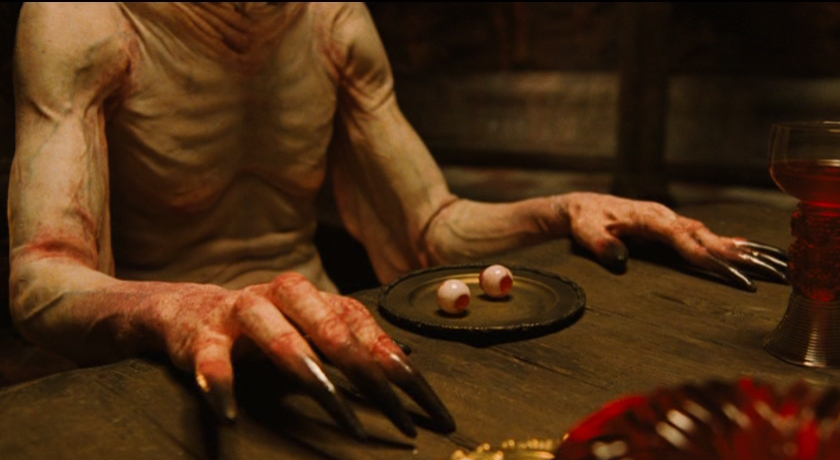
And lest we get too deep into subtleties let’s not overlook all the obvious ways the production design gets under our skin. I can’t even begin to put into words the way that little dish the Pale Man uses for his eyeballs bothers me. Did he have a dish specifically for eyeballs? Or did the Pale Man just make do with whatever was handy? Never mind. I’m sorry I brought it up.
The symbolism of the long blood-red tunnel that Ophelia travels to reach banquet room would verge on the overly obvious if the scene didn’t warrant such broad strokes and if it were not so vividly realized. The murals high on the wall are horrifying in their own right, and establish the Pale Man as an terrifying threat even as he remains perfectly still.
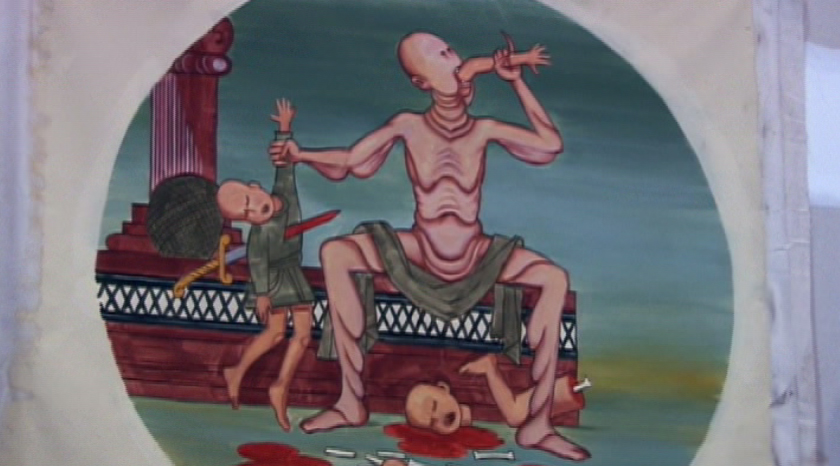 Illustrations by Carlos Jimenez
Illustrations by Carlos Jimenez
Worst of all is that all-too-realistic pile of children’s shoes in the banquet room. Unnerving on its own, but exponentially more so for a story with themes of fascism set in the early 40’s
One of del Toro's main inspirations for the film's mood was the paintings of Goya, specifically the pants-wettingly horrific “Saturn Devours His Children”
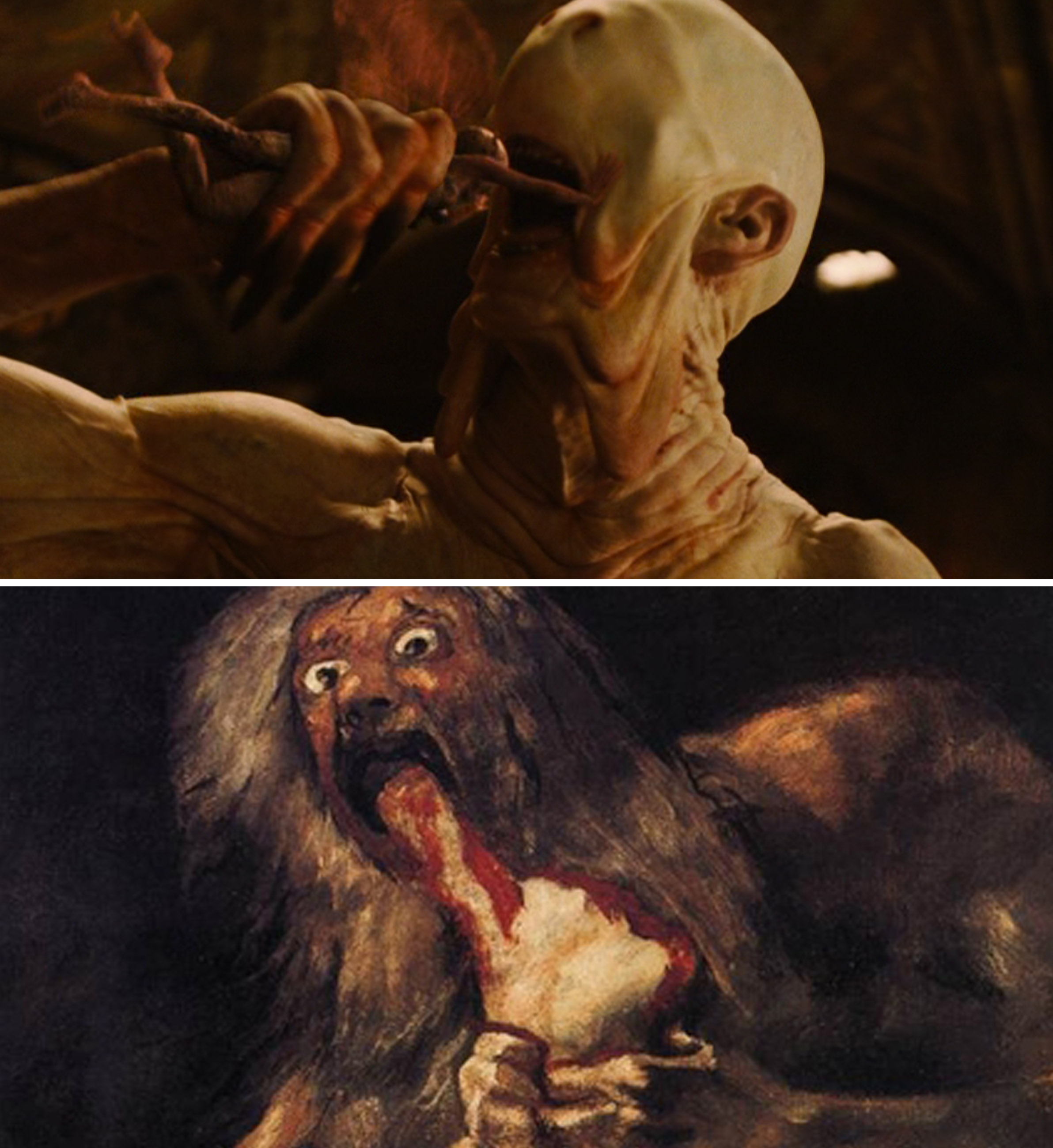
That del Toro along with Caballero and Revuelta created a parade of horrors that can stand alongside the imagery of the Spanish master was an accomplishment worth awarding.

Recommended Futher Reading
Great Overlooked Horror Scenes
Oscar Horrors the Complete Series (thus far)
Pan's Cakes for Breakfast
